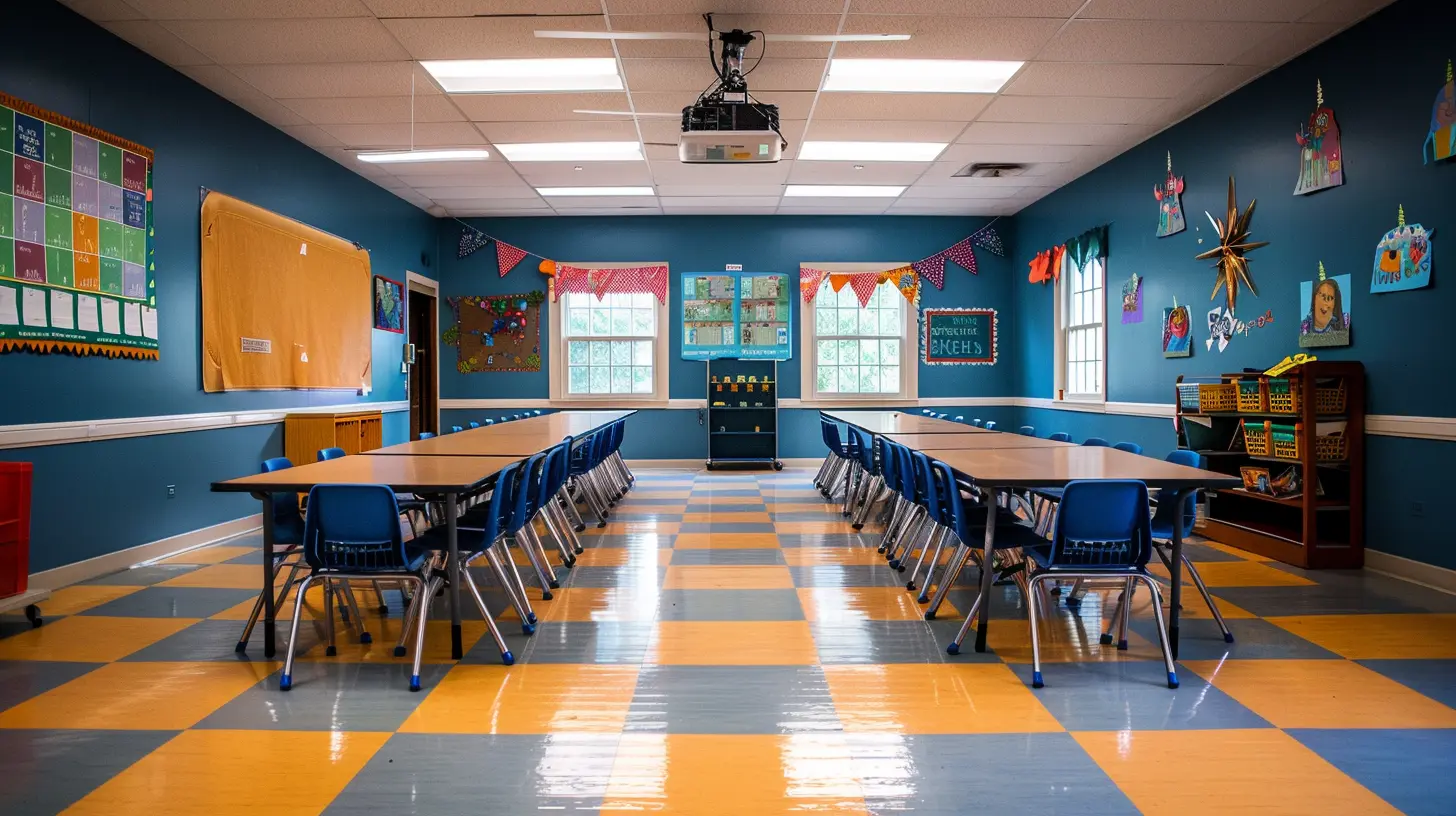Developing Classroom Rules That Students Will Follow
16 August 2025
Ah, classroom rules. The magical list that holds the power to keep a room full of sugar-rushed, TikTok-obsessed students in check. Sounds easy, right? Well, if you’ve ever tried to implement rules in a classroom, you know it's about as easy as herding cats.
But don’t worry—I’m here to help you craft rules that won’t just sit on a pretty poster collecting dust. Instead, they’ll actually work! Yup, students will follow them (or at least, most of them). Let’s dive into how we can create classroom rules that aren’t just ignored suggestions but actual guidelines that help keep your class from turning into pure chaos. 
Why Bother With Classroom Rules?
Imagine a school without rules. Kids are doing TikTok dances on desks, random paper airplanes are soaring across the room, and someone is probably trying to sneak a nap under their desk. Without structure, the classroom can go from zero to circus in no time.Rules help set expectations, create a positive learning environment, and make your life as a teacher a whole lot easier. But here’s the thing: if rules feel like a prison sentence, students won’t follow them. That’s why we need to craft rules that actually make sense, are easy to follow, and—dare I say—fair. 
Step 1: Involve Students in Rule-Making
Here’s a secret: People (especially students) hate being told what to do. But if they feel like they had a say in the rules, they’re waaay more likely to follow them.Let Them Talk!
Start by asking students what kind of classroom they want. Safe? Respectful? Fun? Chances are, they have some pretty solid ideas. Then, guide them to come up with rules that align with those desires.Instead of saying, “Don’t talk when I’m talking,” ask, “Why is it important to listen when someone else is speaking?” This helps them see the why behind the rule instead of feeling like it's an arbitrary demand.
The "Buy-In" Effect
When students help create the rules, they take ownership. It’s like when you let them choose their own punishment. (Okay, maybe don’t go that far, but you get the idea.) They’ll be more invested if they feel they were part of the decision-making process.
Step 2: Keep It Short and Simple
Listen, no one—especially a 10-year-old—is going to remember an extensive list of 27 rules. Keep it simple. Think about the main values you want to uphold in your classroom and craft 4-6 solid rules around them.For example:
- Respect each other. (No need for an essay on bullying—just be decent.)
- Listen when someone is speaking. (Because talking over people is annoying.)
- Keep your hands, feet, and objects to yourself. (No ninja moves in class.)
- Follow directions the first time. (Otherwise, we’re just repeating ourselves all day.)
Simple, right? The fewer the rules, the easier they are to remember—and enforce. 
Step 3: Keep the Language Positive
Nobody likes a list of “Don’ts.” If your rules look like a list of restrictions, students will mentally rebel before you even finish reading them. Instead of saying, “Don’t be late,” try “Arrive on time, ready to learn.”Positive phrasing makes all the difference. It sets expectations rather than just listing prohibited behavior.
Here’s a quick comparison:
❌ Don’t talk while others are talking.
✅ Listen when others are speaking.
❌ No running in the classroom!
✅ Move safely in the classroom.
See how that works? It’s like Jedi mind-tricking them into good behavior.
Step 4: Be Consistent (Seriously)
Here’s where a lot of teachers (bless their souls) go wrong. They set rules but don’t enforce them consistently. And let me tell you—kids notice.If Johnny gets away with talking during lessons but Sarah gets reprimanded, you’re gonna hear the words, “That’s not fair!” faster than you can say “detention.”
So, whatever rules you set, stick to them. Every. Single. Time. Consistency creates fairness, and fairness leads to respect. If students respect the rules (and you), they’re much more likely to follow them.
Step 5: Use Humor and Fun to Reinforce Rules
Want students to actually remember the rules? Make them fun!Turn Them Into a Class Chant
Imagine starting each class with a quick, rhyming chant:"Respect is key, listen and see. Hands to yourself, and let’s all agree!"
Cheesy? Maybe. Effective? Absolutely.
Classroom Rule Posters (But Make Them Fun)
Nobody likes bland “RULES” posters. Instead, make them visually appealing. Better yet—let students create them! When kids make their own rule posters, they take ownership and are more likely to follow them.Step 6: Reinforce With Logical Consequences
Kids will test boundaries. It’s basically in their DNA. But instead of issuing random punishments, use logical consequences.- If a student talks out of turn? They lose the privilege of speaking for a bit.
- If someone refuses to clean up? They stay a little longer after class to tidy up.
Logical consequences help students see the direct impact of their choices without feeling like they're being unfairly punished.
Step 7: Model the Behavior You Expect
You know that classic line: “Do as I say, not as I do”? Yeah, that doesn’t work with kids. They’re watching you like a hawk. If you expect them to be respectful, you need to model respect. If you want them to listen, show that you listen to them too.When students see that you follow the rules, they’ll be much more likely to follow suit.
Step 8: Show Appreciation for Good Behavior
People (kids included) love feeling appreciated. Instead of always pointing out what's going wrong, acknowledge what’s going right.Simple things like:
- “I love how everyone is listening right now!”
- “Wow, you guys followed directions the first time—amazing!”
Praising good behavior encourages more of it. Kids love recognition, and when they realize they’ll get attention for positive actions, they’ll try to repeat them.
Conclusion
Developing classroom rules that students actually follow isn’t about crafting an iron-clad list of “thou shalt nots.” It’s about creating reasonable, clear, and fair expectations that students want to follow.By involving students, keeping it simple, using positive phrasing, staying consistent, and reinforcing with humor and praise, you’re setting yourself up for a classroom that runs smoothly (most of the time, at least). And hey, if all else fails… well, there’s always coffee.
all images in this post were generated using AI tools
Category:
Classroom ManagementAuthor:

Eva Barker
Discussion
rate this article
1 comments
Tracie Martinez
Great insights! Establishing clear and engaging classroom rules fosters a positive learning environment and encourages student accountability. Thank you!
September 11, 2025 at 3:37 AM

Eva Barker
Thank you for your feedback! I'm glad you found the insights valuable. Engaging students in the rule-making process is key to fostering accountability.


